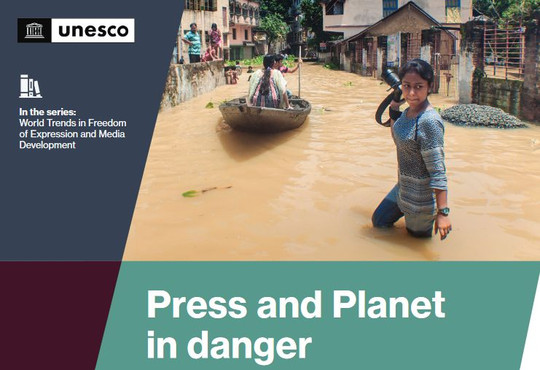The report’s findings are based on the collection of data from 2009 to 2023 and on a survey conducted with the support of the IFJ in March 2024 on 905 respondents in 123 countries .
It highlights key figures on the threats facing climate journalists and news outlets. With an average of 50 attacks per year, the review found that at least 749 journalists, groups of journalists and news media outlets have been attacked while covering environmental issues in 89 countries between 2009 and 2023, in all regions in the world.
The topics covered are mainly environmental protests, mining and land conflicts. At a more local level, the range of topics can differ (logging, deforestation and pollution) as this type of reporting focuses more on the impact on local and regional communities.
According to the report, 353 physical attacks have been reported since 2009, including several types of threats: assaults, arbitrary arrests, physical harassment, attempted murders, abduction or property damaged. Physical attacks are the most important kind of threat. Their amount has doubled between the two most recent periods studied (from 85 incidents to 183).
The data also reveal that legal attacks are the second most serious threat, with a total of 210 cases registered since 2009. The charges involve public order disruption, terrorism, hate speech, dissemination of fake news and resulted in 39 journalists convicted and jailed for their environmental reporting. Defamation lawsuits are predominantly common in Europe and North America, with at least 63 cases recorded.
The report underscores that, while 180 attacks remain unidentified, 382 were perpetuated by state actors (police, military forces, government officials and employees, local authorities) and 207 by private actors (extractive industry companies, criminal groups, protesters and local communities). Those figures reflect a high level of complexity and vulnerability of the profession, as environmental journalism faces pressure from political powers and interference from highly profitable businesses.
The UNESCO-IFJ joint survey discloses additional challenging aspects such as censorship, gender-based threats and working as a freelance. Out of 905 respondent reporters, 70% indicated they had been subject to attacks, threats or pressure while covering environmental issues, with a higher level for freelancers. In addition, 407 respondents declared having self-censorsed their environmental reporting activities.
Finally, the journalists said the following measures would improve their safety: training for high-risk reporting, situational awareness, pre-reporting risk assessment, self-defense, and stress management.
The report recommends the following actions:
- government must fight against impunity, investigate and sanction cases of attacks against journalists, improve existing prevention mechanisms and strengthen protective measures to counter the threats facing journalists covering the environment
- media employers must develop training programs and risk assessments to prioritise journalists’ safety and the sharing of responsibility and ensure the efficiency of these safety protocols.

